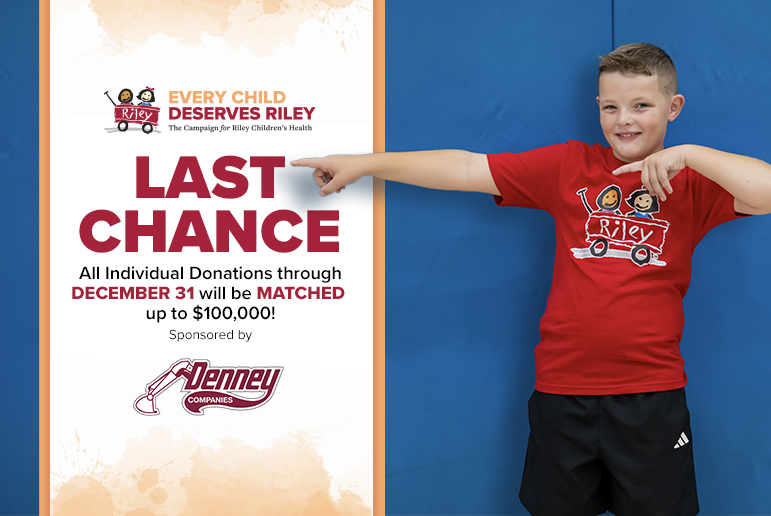Comfort in a Mental Health Crisis

How do you comfort and empower a child in the hospital when the source of their pain isn’t visible? Taylor Cox, a Certified Child Life Specialist, provides services on the inpatient behavioral health unit at Riley Children’s Health. She shared some of the unique ways she supports patients, made possible by generous donors.
1) Tell us about what brought you to Riley, and what you love about your job.
I have always had a strong passion for working with children and their families as they navigate through challenging healthcare experiences. I knew I wanted to utilize my skill set in a place where not only the physical, but also the emotional and mental health of patients and families is paramount. Child Life Specialists often walk through some of the most vulnerable moments patients and families experience throughout their hospitalization, and this honor keeps me coming back every day. Additionally, the culture at Riley is one that sees Child Life Specialists as an integral part of the care team. I cannot say enough great things about the staff I work with as they partner with me to promote positive outcomes and experiences for patients and families.
2) Could you share some examples of the types of support a Child Life Specialist provides to patients in behavioral health?
The therapeutic framework utilized on Riley's inpatient behavioral health unit is called Dialectical Behavior Therapy (DBT). Each day, patients learn a specific skill aimed at promoting self-regulation, emotion regulation, and distress tolerance. As a Child Life Specialist, I facilitate one-hour long therapeutic group three times a week. Each group consists of a therapeutic activity that relates to the skill of the day patients learned in their DBT group.
For example, one of the skills patients are taught is related to emotion regulation. For my therapeutic activity, I will invite patients to create "Feelings Menus." Patients will identify three emotions that are difficult for them. They will then use construction paper to create three separate "menus." On the front of each menu, patients will write the name of the emotion they have chosen. On the inside of the menu, patients will create a list of positive coping strategies they can utilize when experiencing that difficult emotion. Patients can keep these menus with them, and when experiencing the emotion identified, they can open the menu and find a list of coping strategies already laid out for them to choose from.
Because the work is in a group setting, there is opportunity for patients to have organic conversations related to their shared experiences. This allows them to make connections and fosters peer-to-peer support. As these conversations are occurring, I am in a position to guide the conversation in a way that encourages patients to think about their experiences in a new way and challenges their previously held thoughts or ideas about themselves.
3) If you could share a message with Riley Children's Foundation donors who support the behavioral health program, what would you say?
First and foremost, thank you! The patients and families we serve deserve the best care, and the truth is that this level of care would not be possible without you all. It is a privilege to work at an institution where mental health is prioritized, and your donations allow our behavioral health services to continue to grow and meet the ever-changing needs of the children who need us. I greatly appreciate your support!
4) What is something you wish more people understood about the behavioral health crisis that Hoosier kids are facing?
Something I advocate strongly for in my daily work is that mental health is just as important as physical health. Often, the two are intertwined. We, as a society, need to work to normalize seeking out treatment for mental health in hopes that it becomes as second-nature as seeking out treatment for our physical health.
